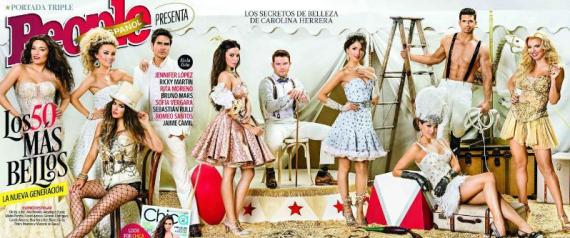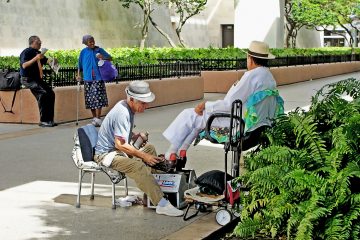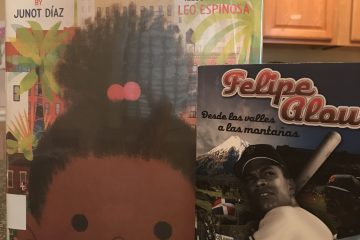Who are the most beautiful of the beautiful?

Let’s take a basic novice skill that we all have in all our curricula:
I can describe someone using common adjectives.

We’ve all seen and done a million activities to get students practicing description. Today, let me offer another alternative, one that offers a deep, critical-thinking aspect to this Can Do statement and brings an AP theme (Beauty and Aesthetics) down to your Spanish 1 class.
People Magazine annually dares to don the right to define who are the most beautiful people in the world, and we breathlessly offer them that right as we eagerly sacrifice our self-esteem on the altar of “if only.”
As your students practice using physically descriptive adjectives, what if you asked them to take a look at the “most beautiful of the most beautiful” – the 24 people who have been elected to People’s list of Latino/a beauties five or more times? What if you asked them to make a list of possible adjectives and check off the ones that describe each “beauty”? Where would the check marks fall?
- Blonde? Dyed? (You betcha.)
- Indigenous? (Not one.)
- Black? (No way.)
- What about by gender? The darkest by far are male: Luis Fonsi and Shalim Ortiz are as dark as the most beautiful are allowed to come.
- Eye color?
- White, relatively? (Of course.)
- Thin? (You know the answer to that one.)

Asking for the description is the easy part. Asking why and then what to do about it – now there’s the real question. But at the end of such an exercise, students will certainly have a better idea about what Latina girls and Latino boys are being told is beautiful. And then? What about comparing the rankings with the U.S. English versions? With what Lupita Nyong’o has to say about her journey to the top?
Asking tough questions in low novice classes – that’s a challenge. But here’s one that fits and is worth the asking.
And then Thomas Sauer comes along and asks me a question that gets me thinking:
I wonder if the problem is the original learning target. What if the question was embedded there?
In that light, I wonder if we could embed cultural, critical thinking in all our Can Do statements, even the Novice ones:
I can list characteristics of a person People en Español would consider the most beautiful and of a person I would consider the most beautiful.
How’s that for turning a Novice Can Do on its head?

5 Comments
Comments are closed.




One of the Scholastic Spanish language magazines (probably level 3) had an article a few years ago, “¿Es rubio México?” that looked at the issue of Mexican TV stars who were white. I believe there were also statistics about the amount of bleaching and cosmetic surgery among young people there, which is much more than in the US. I wonder if it is possible to get a reprint of that article. It was heartbreaking, actually. Maybe a good subject for “El Día de la Raza”… ¿Cuál raza?
What a great point. I’ve also wondered if someone’s done statistics on TV and movie stars and their actual roles – how many times is the darker person cast as the villain?
It makes me think of Viola Davis‘s comment that “You cannot win an Emmy for roles that simply are not there.” Is People not choosing men and women of color as beautiful because they don’t think those people are beautiful, or because the society has that opinion and therefore grants more success and fame to the others?
I have a similar problem with finding juvenile readers for my daughter. She’s reading about at a 3rd, 4th grade level and I was trying to find a series with a girl of color as the main character. From Ramona Quimby to Ivy & Bean, Magic Tree House, Judy Moody, young Amelia Bedelia, young Nancy Drew, Nancy Clancy, I was struck that they are all the same girl. In my case, they are all my daughter – young, smart, fair, thin. How can I teach her that she’s not the most important person in every story simply because she’s young, smart, fair, and thin, when the most important person in every story she reads is her? She loves Katie Woo but those take her about 6 minutes to read. She is not a great fan of American Girl but even those make me think, Okay, Addy, in order to read about a strong black girl do we have to read about slavery, as if that’s the only defining factor in a black girl’s life? I brought the issue to our librarians and they’ve started polling the system’s children’s librarians on suggestions and they’re ordering a full set of the Sassy books, of which our library had none in stock and which Zoe is enjoying a whole lot.
This is such a necessary conversation in all cultures!
Sara Elizabeth, do you have to subscribe to People en Espanol in order to see the pictures? I think it’s a GREAT activity, excellent for high school students. Love it!
Glad to hear it and I’d love to hear how it turns out! You have to subscribe in order to see the pictures of all 50, but if you click the link for the “most beautiful of the most beautiful” you’ll be able to see the slideshow of the 24 who have been on the list 5 or more times. (There are people of different ethnicities on their lists of 50 but my point is there’s no consistency in considering them beautiful in the list or considering them beautiful enough for the cover.) There was a sketchy photo ad on the left side of that page but the slideshow itself, surprisingly, did not include photos of the women with super revealing clothing. You can also do a Google images search for the cover photo and get photos for the activity that way.
[…] …Sara-Elizabeth Cottrell’s most beautiful people blog post […]